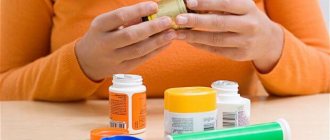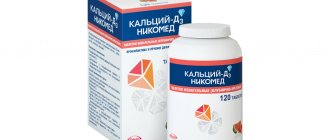Pharmacodynamics
Peripheral vasodilator with a predominant effect on venous vessels. The effect of nitroglycerin is mainly associated with a decrease in myocardial oxygen demand due to a decrease in preload (dilatation of peripheral veins and a decrease in blood flow to the right atrium) and afterload (reduction in peripheral vascular resistance). It has a central inhibitory effect on the sympathetic tone of blood vessels, inhibiting the vascular component of the formation of pain. Causes dilation of meningeal vessels, which explains the headache when using it.
When using sublingual forms, an attack of angina is usually stopped after 1.5 minutes, the hemodynamic and antianginal effect lasts from 30 to 60 minutes.
Pharmacological properties of the drug Nitroglycerin
Nitroglycerin is a drug from the group of organic nitrates, primarily a venous dilator. Nitrates are capable of releasing nitric oxide from their molecule, which is a natural endothelial relaxing factor - a mediator of direct activation of guanylate cyclase. An increase in cGMP concentration leads to relaxation of smooth muscle fibers, mainly venules and veins. It has an antianginal and antispasmodic effect, relaxes the smooth muscle cells of the walls of blood vessels, bronchi, digestive tract, bile ducts and ureters. When administered intravenously, it causes a decrease in preload on the heart due to the expansion of peripheral veins. Reduces blood flow to the right atrium, helps reduce pressure in the pulmonary circulation and regression of symptoms in pulmonary edema, reduces afterload, myocardial oxygen demand (by reducing preload, afterload and tension of the ventricular walls due to a decrease in heart volume). Promotes redistribution of coronary blood flow in areas with reduced blood circulation. It has a central inhibitory effect on the sympathetic tone of blood vessels, inhibiting the vascular component of the formation of pain. Causes dilation of meningeal vessels, which explains the appearance of a specific “nitrate” headache. With prolonged or frequent use of long-acting nitrates, tolerance may develop. After a break in treatment, sensitivity to nitrates is restored. In order to prevent the development of tolerance, it is recommended to maintain a daily interval in taking nitrates (8–12 hours), preferably at night. For most patients, this therapy is more effective than continuous treatment. When using sublingual forms, an attack of angina is stopped after 1.5 minutes, the hemodynamic and antianginal effect lasts up to 30 minutes. Retard tablets can prevent the development of angina attacks. Nitroglycerin is quickly and completely absorbed from the surface of the mucous membranes and through the skin. When taken orally, bioavailability is no more than 10% compared to nitroglycerin administered sublingually (first pass effect through the liver). With sublingual, buccal and intravenous administration, first-pass metabolism is excluded, and the active substance enters directly into the systemic circulation. When taken sublingually at a dose of 0.5 mg, the bioavailability is almost 100%, the maximum concentration in the blood plasma is observed after 5 minutes. Up to 60% of nitroglycerin binds to blood plasma proteins. It is quickly metabolized with the participation of nitrate reductase, with the formation of di- and mononitrates (only isosorbide-5-mononitrate is active), the final metabolite is glycerol. Excreted in the urine in the form of metabolites. The total clearance is 25–30 l/min, the half-life is 4–5 minutes. With intravenous administration, the half-life is 1–3 minutes, the total clearance is 30–78 l/min. The active substance is rapidly metabolized in the liver by glutathione reductase, which acts on organic nitrates. In addition, nitroglycerin is metabolized in erythrocytes using enzymatic reactions that occur with the participation of sulfhydryl radicals, as well as through interaction with reduced hemoglobin.
Side effects
From the cardiovascular system: dizziness, “nitrate” headache, tachycardia, skin flushing, fever, decreased blood pressure; rarely (especially in case of overdose) - orthostatic collapse, cyanosis.
From the gastrointestinal tract: dry mouth, nausea, vomiting, abdominal pain.
From the side of the central nervous system: rarely (especially in case of overdose) - anxiety, psychotic reactions, lethargy, disorientation, blurred vision, headache (especially at the beginning of treatment, decreases with long-term therapy), dizziness and a feeling of weakness. Allergic reactions are possible.
Nitroglycerin drug overdose, symptoms and treatment
Manifested by a decrease in blood pressure (below 90 mm Hg), orthostatic reactions, reflex tachycardia, headache, dizziness, drowsiness, feeling of heat, nausea, vomiting, with a significant overdose (more than 20 mg/kg) - collapse, cyanosis, methemoglobinemia, dyspnea and tachypnea. If symptoms of overdose develop, stop further administration and remove the patch. The head end of the bed should be lowered and the patient's legs should be raised. As a rule, blood pressure normalizes within 15–20 minutes after stopping the administration of nitroglycerin, then administration can be continued after the infusion rate has been re-established. To correct blood pressure, it is possible to use phenylephrine, epinephrine and other vasoconstrictors. For methemoglobinemia, depending on the severity, ascorbic acid 1 g is prescribed orally or in the form of a sodium salt intravenously; IV methylene blue 0.1–0.15 ml/kg 1% solution (up to 50 ml), oxygen therapy, hemodialysis, exchange blood transfusion.
List of pharmacies where you can buy Nitroglycerin:
- Moscow
- Saint Petersburg
Interaction
Simultaneous use with vasodilators, antihypertensive drugs, ACE inhibitors, beta-blockers, CCBs, procainamide, tricyclic antidepressants, MAO inhibitors, phosphodiesterase inhibitors, as well as ethanol, enhances the hypotensive effect.
Prescription with dihydroergotamine may lead to an increase in its content in the blood and an increase in blood pressure (due to increased bioavailability of dihydroergotamine).
The simultaneous administration of nitroglycerin and heparin reduces the effectiveness of the latter (after discontinuation of the drug, a significant decrease in blood clotting is possible, which may require a reduction in the dose of heparin).
Directions for use and doses
Sublingual.
Nitroglycerin is recommended to be taken as prescribed by a doctor.
The tablet is kept under the tongue until completely absorbed, without swallowing, immediately after pain occurs - 0.5–1 mg per dose. In many patients with stable angina, the effect occurs with a smaller dose (1/2–1/3 tablet), therefore, if the pain goes away quickly, it is recommended to spit out the remainder of the tablet that has not had time to dissolve. Typically, the antianginal effect appears within 0.5–2 minutes; 75% of patients note improvement within the first 3 minutes, and another 15% within 4–5 minutes. If there is no antianginal effect, during the first 5 minutes you need to take 1 more tablet. nitroglycerin. In the absence of a therapeutic effect after taking 2-3 tablets. you need to call a doctor immediately. Duration of action after sublingual administration is about 45 minutes. For frequent attacks of angina, it is customary to prescribe long-acting nitroglycerin medications. Tolerance to sublingual forms of nitroglycerin develops infrequently, however, if it occurs in some patients, the dose of the drug must be gradually increased, bringing it to 2-3 tablets.
Use of the drug Nitroglycerin
Inside, sublingually, intravenously. Elimination of angina pectoris. Sublingually (the tablet or capsule with the solution is kept under the tongue until completely absorbed, without swallowing), immediately after the onset of pain - 0.5–1 mg per dose. If necessary, to achieve a faster effect, the capsule should be bitten immediately; the capsule can be repeated after 30–40 minutes. Typically, the antianginal effect appears within 0.5–2 minutes, in some cases within 4–5 minutes. If there is no antianginal effect within the first 5 minutes, another 0.5 mg of nitroglycerin should be prescribed. In the absence of a therapeutic effect after 2–3 doses, the likelihood of developing myocardial infarction should be taken into account. When using a 1% nitroglycerin solution to relieve an attack, 2-3 drops of the solution are applied to a small piece of sugar and kept in the mouth without swallowing until it is completely absorbed. Duration of action after sublingual administration is about 45 minutes. For frequent attacks of angina, it is advisable to prescribe prolonged forms of nitrates. If an attack of angina develops during treatment with prolonged forms of nitrates, nitroglycerin must be taken sublingually to relieve an acute attack. Tolerance to sublingual forms of nitroglycerin develops infrequently, however, when it develops in some patients, the dose must be gradually increased, bringing it to 2-3 tablets. Long-acting nitroglycerin, intended for the prevention of angina pectoris, is taken orally with water before meals. In mild cases - 0.0029–0.0058 g 2–3 times a day. In more severe cases - 0.0052–0.01 g 2–3 times a day. The maximum daily dose is 0.0348 g. Due to the fact that the bioavailability of nitroglycerin from retard tablets is low, it is recommended, if well tolerated, to take 1-3 tablets at a time regularly 3-4 times a day or periodically - 30-40 minutes before expected physical activity. If the therapeutic effect is insufficient, the dose can be gradually increased (but not more than 2 tablets per dose), and after the onset of a therapeutic effect, it can be reduced. Aerosol for sublingual use: to relieve an attack of angina - 0.4–0.8 mg, pressing the dosing valve, preferably in a sitting position, while holding your breath at intervals of 30 s; After this, you should close your mouth for a few seconds. If necessary, repeat administration, but not more than 1.2 mg over 15 minutes. To prevent an attack - 0.4 mg 5-10 minutes before exercise. In case of acute left ventricular failure, developing pulmonary edema - 1.6 mg or more in a short period of time. Treatment with nitroglycerin for intravenous administration should be carried out by individually setting the rate of administration of the solution. Administered through an automatic dispenser or through a conventional IV system. When using a polyvinyl chloride tube system, the active substance is absorbed and losses on the tube walls are up to 60% (it is advisable to use polyethylene and glass tubes). The solution is quickly destroyed in the light, so the bottles and transfusion system must be shielded with light-proof material. Typically, an infusion solution with a concentration of 100 mcg/ml is used: the concentrated solution is diluted with 0.9% sodium chloride solution or 5% dextrose solution and administered intravenously at an initial rate of 5 mcg/min. The rate of administration can be increased every 3–5 minutes by 5 mcg/min (depending on the effect, heart rate, central venous pressure and systolic blood pressure, which can be reduced by 10–25% of the original, but should not be lower than 90 mm Hg. Art.). If the therapeutic effect is not achieved at an injection rate of 20 mcg/min, the injection rate can be increased by 10–20 mcg/min. If a response occurs (in particular, a decrease in blood pressure), a further increase in the infusion rate is not carried out or is carried out at longer intervals. To achieve a good effect, the rate of administration of 0.01% nitroglycerin solution usually does not exceed 100 mcg/min (1 ml/min). In the absence of effect due to the use of nitroglycerin in lower doses and at an acceptable level of blood pressure, the rate of administration of 0.01% solution can reach 300–400 mcg/min (3–4 ml/min). A further increase in the infusion rate is not advisable. The duration of use is determined by clinical indications and can be 2–3 days.
special instructions
While taking nitroglycerin, there may be a significant decrease in blood pressure and the appearance of dizziness during a sudden transition to a vertical position from a “lying” or “sitting” position, when drinking alcohol, doing physical exercise, and in hot weather. Nitroglycerin, like all organic nitrates, develops addiction with frequent use and requires increasing the dose.
When driving vehicles and operating machinery that require increased attention, it should be borne in mind that taking nitroglycerin can lead to a decrease in the speed of motor and mental reactions.
The severity of headache while taking nitroglycerin can be reduced by reducing its dose and/or simultaneous administration of validol.
Buy Nitroglycerin sublingual tablets. 0.5 mg No. 40 in pharmacies
Trade name of the drug:
Nitroglycerine
International nonproprietary or generic name:
nitroglycerine
Dosage form:
sublingual tablets
Composition per tablet
Nitroglycerin with dextrose, containing the active ingredient: nitroglycerin (in terms of 100% substance) - 0.5 mg, excipient: dextrose - 4.5 mg.
Excipients:
aspartame -0.3 mg, colloidal silicon dioxide (Aerosil) - 0.9 mg, stearic acid - 0.4 mg, croscarmellose sodium - 1.0 mg, potato starch - 2.6 mg, microcrystalline cellulose - 34.8 mg.
Description:
round flat-cylindrical tablets of white or almost white color, with a chamfer.
Pharmacotherapeutic group:
vasodilator, nitrate.
pharmachologic effect
Pharmacodynamics
Peripheral vasodilator with a predominant effect on venous vessels. The effect of nitroglycerin is mainly associated with a decrease in myocardial oxygen demand due to a decrease in preload (dilation of peripheral veins and a decrease in blood flow to the right atrium) and afterload (reduction in total peripheral vascular resistance).
It has a central inhibitory effect on the sympathetic tone of blood vessels, inhibits the vascular component of the formation of pain. Causes dilation of meningeal vessels, which explains the headache when using it.
When using sublingual forms, an attack of angina is usually stopped after 1.5 minutes, the hemodynamic and antianginal effect lasts from 30 to 60 minutes.
Pharmacokinetics
Quickly and completely absorbed from the surface of the mucous membranes. When taken sublingually at a dose of 0.5 mg, nitroglycerin immediately enters the systemic circulation, bioavailability is 10094. The maximum concentration in the blood plasma is reached after 5 minutes.
The drug has a large volume of distribution. The connection with blood plasma proteins is 60%.
Indications for use
Relief and short-term prevention of angina attacks
Contraindications
Hypersensitivity to nitrates, shock, collapse, simultaneous use of PDE 5 inhibitors (sildenafil, tadalafil, vardenafil, etc.), age under 18 years (efficacy and safety have not been established for ages under 18 years).
With caution (balancing risk and benefit): cranial hypertension, cardiac tamponade, uncontrolled hypovolemia, in patients with heart failure with normal or low pressure in the pulmonary artery, arterial hypotension (systolic blood pressure less than 90 mm Hg), angle-closure form of glaucoma with high intraocular pressure, severe anemia, hyperthyroidism, toxic pulmonary edema, subarochnoid hemorrhage, recent head trauma, hemorrhagic stroke, conditions accompanied by a decrease in left ventricular filling pressure (acute myocardial infarction, isolated mitral stenosis, constrictive pericarditis), idiopathic hypertrophic subaortic stenosis, cerebrovascular accident, severe renal and/or liver failure and the development of methemoglobinemia).
Use during pregnancy and breastfeeding is possible only for health reasons.
Directions for use and doses
Nitroglycerin is recommended to be used as prescribed by a doctor.
Nitroglycerin should be taken immediately at the first sign of an angina attack:
1 tablet of Nitroglycerin is placed under the tongue and held until completely dissolved, without swallowing. The usual dose of the drug is 1 tablet under the tongue.
If the angina attack is not stopped within 5 minutes, you need to take 1 more tablet of Nitroglycerin.
If there is no therapeutic effect after taking 2 tablets, you should call a doctor.
For frequent attacks of angina, it is advisable to use long-acting nitroglycerin preparations.
Side effect
From the central nervous system: blurred vision, “nitrate” headache, dizziness and feeling of weakness, anxiety, psychotic reactions, lethargy, disorientation.
From the cardiovascular system: decreased blood pressure; tachycardia, rarely (especially with overdose) - orthostatic collapse, cyanosis, redness of the facial skin.
From the gastrointestinal tract: dry mouth, nausea, vomiting, abdominal pain. Allergic reactions and hypothermia are possible.
Overdose
Symptoms: decreased blood pressure (below 90 mmHg) with orthostatic dysregulation, severe dizziness, headache, fainting, shortness of breath, severe weakness, rapid heartbeat, increased body temperature, convulsions, asthenia, drowsiness. When using high doses (more than 20 mcg/kg) - collapse, cyanosis, methemoglobinemia, dyspnea and tachypnea.
If symptoms of overdose appear, immediately lay the patient down, elevate his legs and immediately call a doctor.
Interaction with other drugs
The hypotensive effect of the drug may be excessive in case of uncontrolled simultaneous use of vasodilators, antihypertensive drugs, angiotensin-converting enzyme (ACE) inhibitors, phosphodiesterase inhibitors, slow calcium channel blockers, tricyclic antidepressants, ethanol, diuretics, beta-blockers, monoamine oxidase inhibitors (MAOIs), procainamide coenzyme for the synthesis of nitric oxide (sapropterin).
Administration with dihydroergotamine may lead to an increase in its content in the blood and an increase in blood pressure (due to an increase in the bioavailability of dihydroergotamine).
The simultaneous administration of Nitroglycerin and heparin reduces the effectiveness of the latter (after discontinuation of the drug, a significant decrease in blood clotting is possible, which may require a reduction in the dose of heparin).
special instructions
While taking Nitroglycerin tablets, a significant decrease in blood pressure and the appearance of dizziness may occur during a sudden transition to a vertical position from a “sitting” or “lying down” position; Drinking alcohol, exercising, and hot weather. To Nitroglycerin, as well as. to other organic nitrates, with frequent use, addiction may develop, requiring an increase in dosage.
If clarity of vision or dry mouth persists or is severe, treatment should be discontinued.
The severity of headache while taking Nitroglycerin can be reduced by reducing its dose and/or simultaneous use of menthol-containing medications.
The drug contains dextrose, which must be taken into account when used in patients with diabetes; the drug is contraindicated in patients with phenylketonuria (the drug contains aspartame).
Impact on the ability to drive vehicles and machinery
When driving vehicles and operating machinery that require increased attention, it should be borne in mind that taking Nitroglycerin can lead to a decrease in the speed of motor and mental reactions.
Release form
Sublingual tablets 0.5 mg.
40 tablets in a glass or polymer tube with a polyethylene stopper. The test tube or pencil case along with instructions for use are placed in a cardboard pack
Storage conditions
Store at a temperature not exceeding 25C, away from fire. Keep out of the reach of children.
Best before date
2 years.
The drug should not be used after the expiration date.
Vacation conditions
Over the counter.


